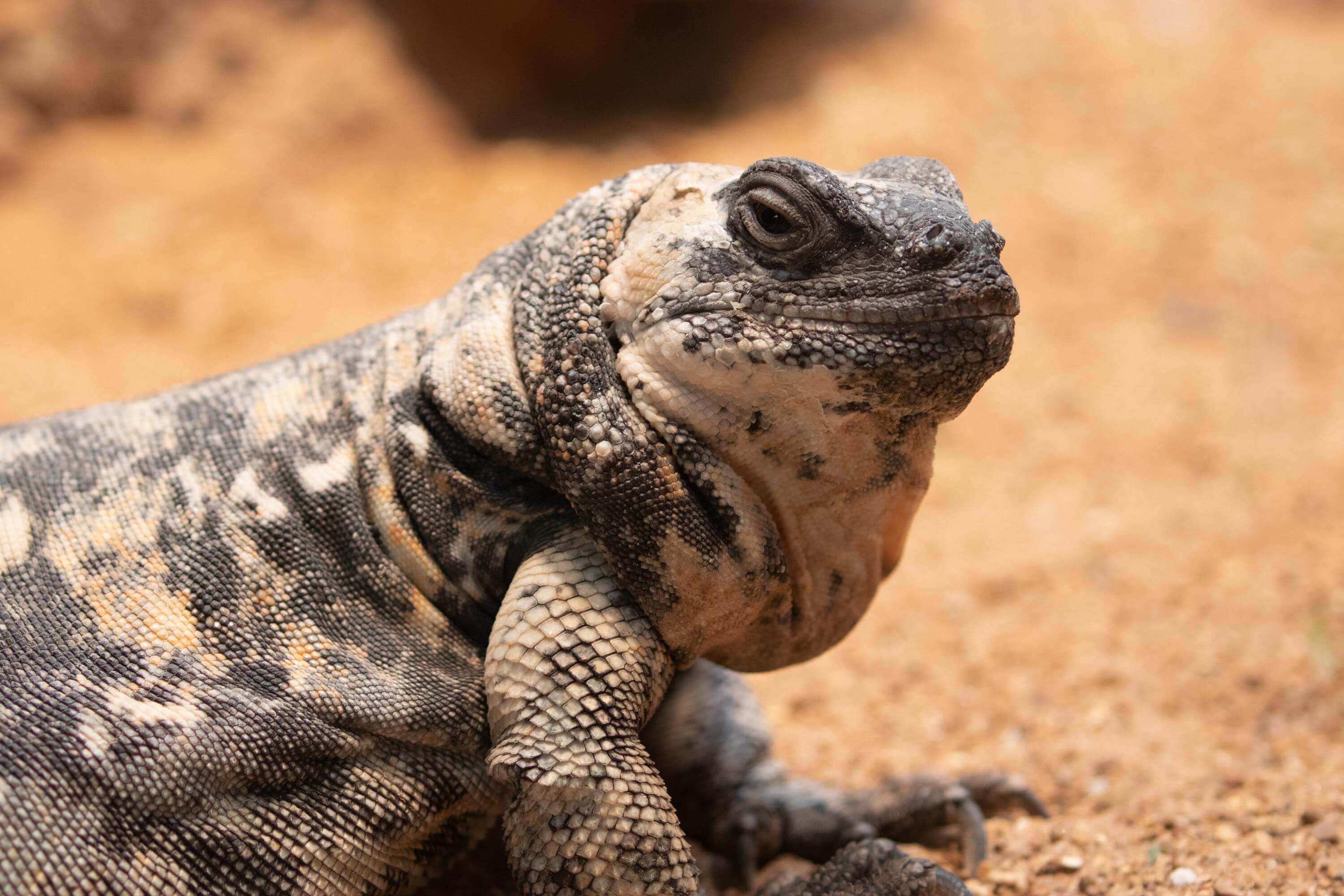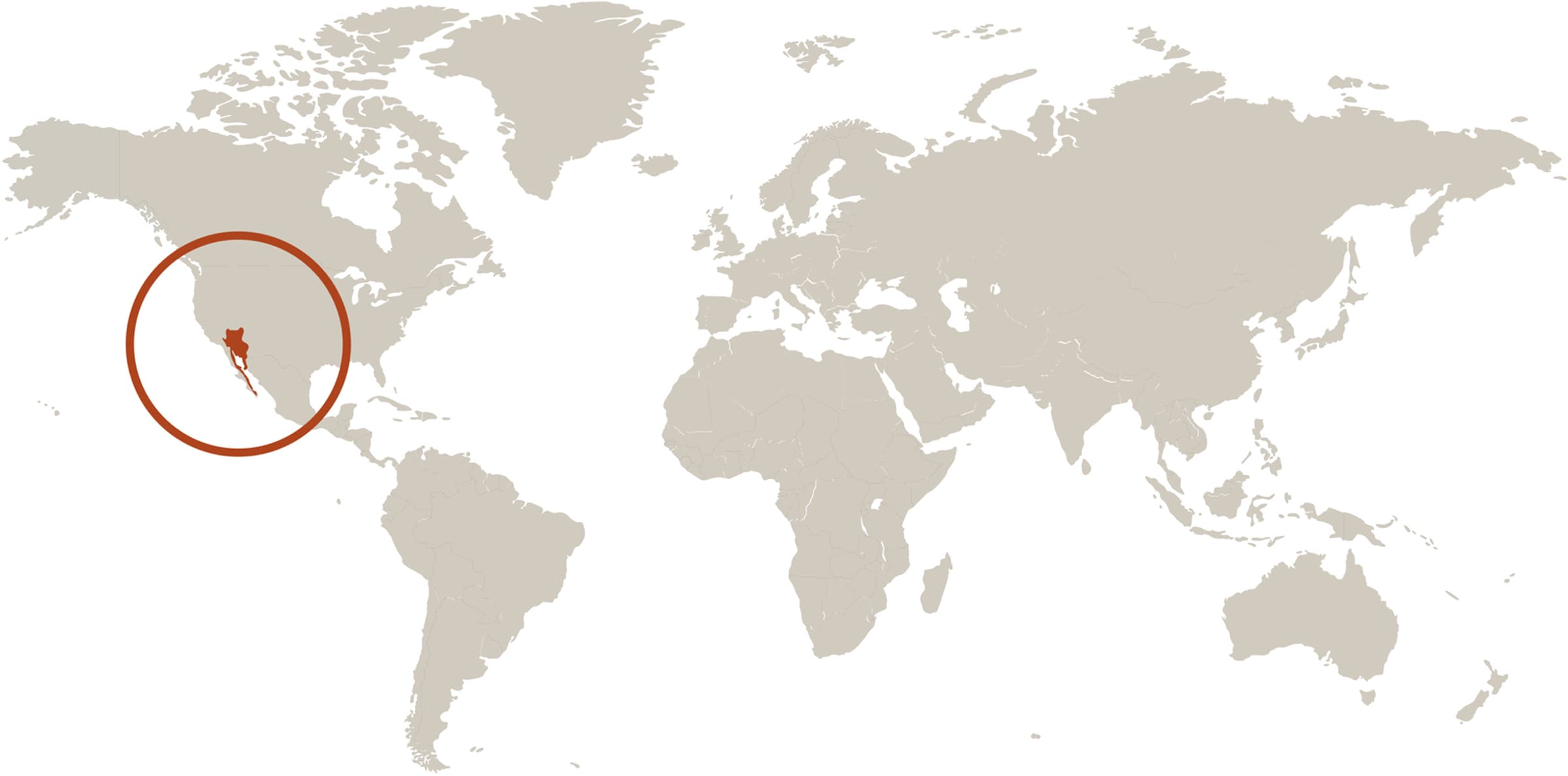
Western Chuckwalla
Sauromalus obesus obesus
Did you know?
- Western chuckwallas are part of the Iguanidae family, which they share with iguanas and other chuckwallas.
- The name "chuckwalla" derives from the Shoshone tcaxxwal or the Cahuilla caxwal, which the Spaniards transcribed as chacahuala.
- They live in rocky deserts in the Southwest United States.
- They are primarily vegetarians.
- A female will lay between five and 16 eggs per clutch.
Adaptations
Chuckwallas are large, gray-colored lizards related to the iguana. They are a fairly common lizard with a widespread range throughout the southwestern United States and adjacent areas. All chuckwallas appear to be pot-bellied and baggy, with loose folds of skin around the neck and shoulders. They are able to change their coloration in response to environmental conditions, which helps them camouflage. Western chuckwallas will shelter and become inactive for weeks or months at a time during the summer (a process known as aestivation) and winter (a process known as brumation, similar to hibernation but with periods of wakefulness). These inactive periods help them survive in severe conditions, such as in extremely dangerous heatwaves.
Young and Family
Western chuckwallas mate in the spring. About two months later, females lay their eggs underground. A mother will lay between five and 16 eggs at a time, and the eggs hatch in the fall.
Threat Level
- Unknown
- Common
- Near Threatened
- Threatened
- Endangered
- Critically Endangered
- Extinct in the Wild
No listed by IUCN
This means that conservation status is uknown at this time.
Range
Southwestern United States
Habitat
Rocky deserts

We care about Western Chuckwallas
We support western chuckwallas in the Charles H. Hoessle Herpetarium at the Zoo. Learn more about how we are helping wildlife around the world.
Find this animal in Historic Hill

SAINT LOUIS ZOO ZONE
Historic Hill
Historic Hill is a lovely stroll through one of the oldest parts of the Saint Louis Zoo. From the 1904 World’s Fair Flight Cage to the Spanish architectural flavor of the 1920s in the Bird House, Primate House and Herpetarium to the finishing touches of our thoroughly modern exhibits, this area of the Zoo has a unique ambiance and a nostalgic history that make it a great destination.

